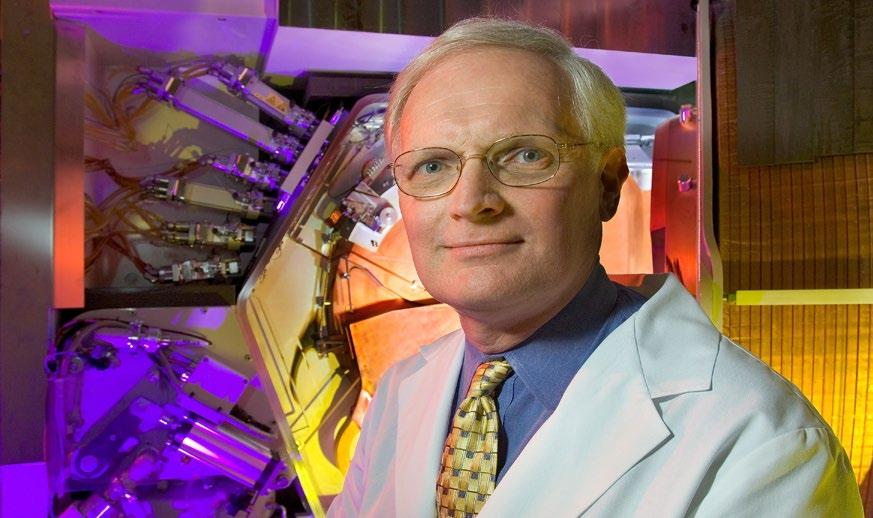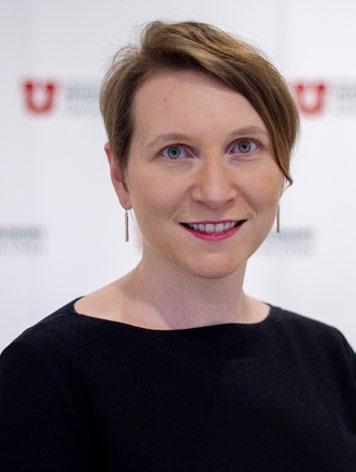
4 minute read
Peter Godbe Gibbs: 1924 - 2019
Peter Godbe Gibbs passed away July 13, 2019. He was born December 7, 1924, in Salt Lake City, Utah, to Lauren Worthen Gibbs and Mary Godbe Gibbs. He had had three brothers, Edwin, David, and William, and one sister, Mary Adele. In 1953, he married Miriam Starling Kvetensky in Urbana, Illinois. They had three children (Doon (Teri), Victoria, and Nicholas (Courtney); five grandchildren, and three great-grandchildren. He and Miriam were married for 58 years until her death.
As a child, Gibbs attended Ensign Elementary, Bryant Junior High, and East High School in Salt Lake City. He was good at math, science, and writing and wanted to be a journalist. After the attack on Pearl Harbor, he enlisted in the U.S. Navy in December 1941. Because of his talent for science, the Navy enrolled him in a series of universities, including Beria College (Kentucky), the University of Michigan, and Columbia University, studying physics as part of the V-12 program. He subsequently received his commission as a naval officer. He then attended Gunnery Officers Training School and became an anti-aircraft gun commander as an ensign. He was assigned to the USS Columbia as an instructor to newly commissioned officers. He left the Navy as a Lieutenant Commander shortly after the war ended.
While in the Navy, Gibbs discovered that he loved physics. He attended the University of Utah and
received his bachelor’s degree in 1947, his master’s degree in 1949, and a Ph.D. in 1951, all in physics. His doctorate was under the guidance of the distinguished physical chemist, Henry Eyring. He subsequently conducted postdoctoral studies from 1951-52 at the University of Illinois at Urbana-Champaign under John Bardeen, who received two Nobel Prizes in Physics. Between 1952 and 1955, Gibbs was an instructor in the Physics Department at the University of Illinois and a Fulbright lecturer in theoretical physics in Colombo, Ceylon, at the University of Ceylon—a remarkable adventure with a young wife and new baby.
Return to the U
After the years in Illinois and Ceylon, Gibbs had several interesting job offers at prestigious universities and companies in the Midwest and on the East Coast, but he decided to return home to the University of Utah and to the mountains. He joined the Department of Ceramic Engineering in 1955 and then moved to the Physics Department in 1956. He rose through the ranks to become a professor in 1962. The American Ceramic Society honored him with the Ross Coffin Purdy Award for his work on theoretical modeling of ceramic materials in 1962. In addition to being a professor of physics, he served as a consultant at different times between 1957 and 1967 to the North American Aviation Company, to Atomics International, to the Stanford Research Institute, and to the Organization of the American States (advising on scientific affairs). In 1963, he again took his family—a wife and three children, ages 5-10 years, on an adventure to Sao Carlos, Brazil, for a year where he was a Fulbright lecturer in physics at the University of Sao Carlos. (“If you’re not doing stuff, you’re not alive.”) From 1967 to 1976, Gibbs served as chair of the Physics Department at the University of Utah. As chair, he grew the department, attracting new and distinguished faculty in a range of new disciplines, spearheading construction of a new building, and starting the new “Science and Society” curricula. The department’s national and international reputation and stature grew accordingly. Frontiers of Science
His best-known accomplishment as chair was creating the Frontiers of Science Lecture Series in 1968, attracting world-renown scientists across all fields of science to give popular lectures that anyone could understand. In the early days, he invited scientists, many whom were friends, by inviting them to ski with his family on the weekends and enjoy elaborate dinners at home. Later, as the Frontiers of Science became well known, the ski weekends were no longer necessary. Well attended and imitated around the country, these lectures are now an established University Utah lecture series. In 2018, Gibbs was honored at the 50th anniversary of the series. He was proud of the series and the fact that he had successfully nominated one of its earliest speakers, Murray GellMann, for the 1969 Nobel Prize in Physics for the discovery of the quark. During these years, Gibbs also managed to lead a research project focused on bioengineering, characterizing the current of injury that accompanies bone displacements.
From 1977 until his retirement in 1992, Gibbs continued research and teaching in the Physics Department at the U, including sabbaticals in the Physics Department at the University of California, Berkeley, and at the Institute for Theoretical Physics at the State University of New York at Stony Brook. He was an unrelenting supporter of up-and-coming young people, offering encouragement and advice based on his experience. He started a life-long project, called “The Upside-Down Theory” to describe fundamental elements of physics, using a few simple symmetry principles and connecting them in surprising ways to other parts of science. Upon his retirement, he wrote to the chair of the Physics Department that it was a privilege to be a physicist and that he was stepping down to make room for others. His interest in physics, however, never stopped, and he was active until the very last days of his life.
Although his family, their adventures, and his science consumed his life, Gibbs was also an avid artist, photographer, skier, mountaineer, and river rat. He Continued on page 14








